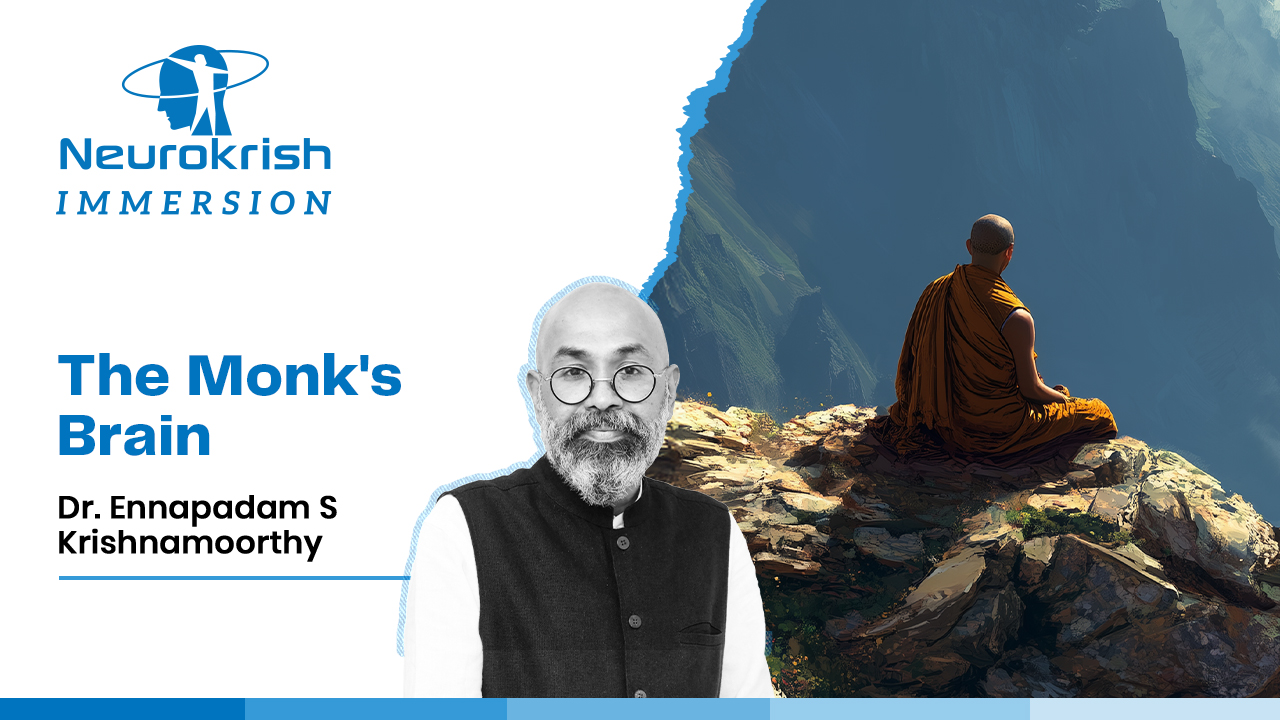In 2002, a Tibetan Buddhist monk named Mingyur Rinpoche travelled over 7,000 miles from his quiet monastery in Nepal to the University of Wisconsin, home to one of the world’s most advanced brain labs. Under the guidance of neuroscientist Richard Davidson, researchers placed electrodes on Rinpoche’s scalp and studied his brainwaves while he meditated on compassion.
The results were so extraordinary, the team thought their equipment was broken. His brain produced a burst of electrical activity that sustained for the entire duration of his meditation, not once, but across multiple sessions.
Functional MRI scans went on to show that Rinpoche’s empathy circuits were 700 to 800 times more active during meditation than at rest. And he was not alone. More than 20 monks studied at the same time showed similar patterns.
Perhaps even more fascinating, their brains exhibited elevated gamma wave activity not only during meditation but even at rest. Gamma waves, the brain’s fastest frequency, are associated with heightened awareness, compassion, intelligence, and memory. Imagine a moment of deep flow, when everything feels clear, effortless, almost superhuman. That is gamma in action.
What Is the Monk’s Brain?
The “monk’s brain” is a metaphor for how contemplative practice reshapes the human brain. Daily meditation does more than calm the mind. It rewires neural circuits that regulate attention, emotion, and empathy.
The science of neuroplasticity, the brain’s ability to change with experience, is what makes this possible. With practice, even 10 minutes of daily mindfulness can begin shifting patterns of thought and emotional reactivity.
Two styles of meditation have been studied most deeply:
- Focused Attention (FA): concentrating on a single object, such as a candle flame or a breath.
- Open Monitoring (OM): observing moment-to-moment experience without judgment or reaction.
Both forms have measurable effects on critical brain structures, particularly the default mode network, which is active when the mind is wandering. In conditions like ADHD, this network is hyperactive. Remarkably, long-term meditators show the ability to switch it off at will, entering sustained states of awareness.
What Science Reveals
Studies over the past two decades consistently show that meditation:
- Increases grey matter in the prefrontal cortex (the social and emotional brain).
- Reduces amygdala reactivity (calming the fear and stress center).
- Enhances compassion circuits, particularly the insula and temporoparietal junction.
- Brings brain and heart rhythms into synchrony, creating coherence between body and mind.
Expert meditators demonstrate not only temporary brain changes but also enduring shifts, their resting brain states look different from novices. Gamma waves become a constant background rhythm, like a symphony conductor aligning the mind’s instruments.
Zen Rules for Daily Living
Meditation does not only happen on a cushion. Zen practice extends into daily habits, many of which modern neuroscience validates. Writer Leo Babauta summarizes 12 practical “monk rules” that can be adapted by anyone:
- Do one thing at a time.
- Do it slowly and deliberately.
- Do it completely.
- Do less, but with depth.
- Put space between activities.
- Develop rituals.
- Set aside time for tasks.
- Sit daily (zazen).
- Smile and serve others.
- Make chores like cleaning and cooking into meditation.
- Reflect on what is necessary; reduce clutter.
- Live simply.
Each rule carries a neurological benefit. Doing one thing quiets distraction. Doing less frees mental bandwidth. Sitting daily resets attention networks. Ritualizing mundane tasks reduces anxiety and brings calm to everyday life.
A Personal Challenge
Ask yourself: Which one rule could I try this week? Could I slow down one routine, like brushing my teeth or walking, and turn it into a moment of mindfulness?
Meditation does not require a monastery. It begins with attention, presence, and the willingness to live deliberately.
As a clinician and student of the mind, I find the evidence compelling: when we embrace contemplative practice, the brain and the self can be reshaped.
So, take a breath. Let your thoughts pass like clouds. And remember, transformation begins not in the monastery, but in this very moment.
Share this post
